The Conflict of Sexuality and Morality in Law: Multicultural Visions in a Transnational Age
“Vatr naryasto pojyantay, ramantay tatr devta”— 3/56 Manusmriti (Where Women are provided place of honor, Gods are pleased and reside there in that household) Introduction Can Women’s Sexuality destroy society? The positivist legal order compounds that Sexuality in ‘Gender’ is a substantive question with the binary of gender being perceived as “sameness” or as “difference”. On the other… Read More »

“Vatr naryasto pojyantay, ramantay tatr devta”— 3/56 Manusmriti
(Where Women are provided place of honor, Gods are pleased and reside there in that household)
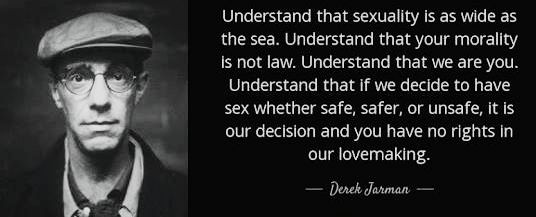
Introduction
Can Women’s Sexuality destroy society? The positivist legal order compounds that Sexuality in ‘Gender’ is a substantive question with the binary of gender being perceived as “sameness” or as “difference”. On the other hand, the Sociocultural Evolution of Humanity argues that Morality refers to the differentiation of actions which distinguishes the ‘proper’ from the ‘improper’ and is moreover a relative question meant for regulating human behavior based on a particular ideology.
Widespread social fears and anxieties from particular historical moments to the modern day may result in “moral panics” around sexuality, especially among the middle classes. Hence, Morality is a social accomplishment whereas Sexuality is a denounced taboo. Struck between these presumed connections of embodied sex differences and moral societal intimidations, both the heterosexual and homosexual understanding of Sexuality and the Social
Constructionism of Morality in Law is at conflict.
Sexuality and Morality cannot be virtually divorced from each other as Sexual life and Conjugality vis-à-vis Morality gained new outlook through the reworked models of Patriarchal oppression in the early nineteenth century. Ultimately, the onus fell on the ‘Woman’ who became symbols of chastity for restoring the prestige of the household. So, the individual Sexuality and Desire within the constraints of Marriage became secondary as Marriage and Family were seen as the most important social and economic institution which nurtured healthy future citizens of the nation.
Any attack on the aims and ideals of Marriage was seen as immoral and wrong. Love was shunned then as it degraded honor whereas Marriage was upheld as it provided dignity. With a new ‘Civic Morality’ gaining ascendancy and power within the home, Marriage thus becomes an ‘empowered moral vision’ for internalization of Family and Institutionalized Sex with the self-disciplining, regulating and monitoring of the sexual body.
In this connection, the article’s core aim is to explore and analyze the critical link between Sexuality and Morality in Law by simultaneously focussing on the conflict between orthodox cultural and socialistic perspectives on Sex and Morality vis-à-vis Modernity enumerating on ethical dilemmas and by offering pragmatic remedies to reduce the conflict at the grass root level.
The Roots of Sexual Phenomenon: Forbidding the Non-Forbidden?
Disparity still exists regarding the standard form of legal regulation of “Sexual Conduct”. Though what constitutes Sexual Conduct is still debatable, it widely implies any sexual act or an act performed with an intention or willingness to obtain sexual satisfaction for one or more person participating in the act. Gone are those times when Sexuality was never shunned in public, forgotten were those times when Sexuality was never frowned upon the people as immoral rather people then were civilized and mature enough to understand its consequences and implications which was glorified and endured for many centuries in the ancient past.
As time marched, the notion of understanding Sexuality underwent gradual corruption and finally came to be regarded as something ‘Immoral’ or ‘Bad’. “God created Adam and Eve, not Adam and Steve” was a common statement developed by the Catholic Churches in the early medieval period. When God created Adam and Eve both equally and gave them equal status, why does the society look down at Woman as inferior to Man? It is a universally accepted principle that a Man and a Woman is considered ‘One’ and it is this “Oneness” which sustains the human race.
Subjugating Woman to Man is also another form of prohibition of expression of ‘Free Sexuality’. Morality and Sexuality always stood on crossroads as Morality ‘curtailed’ the ‘Sexual Freedom’ which is believed to be detrimental to the society at large if not restrained and regulated within a restricted framework.
The stark distinction between Sexuality and Morality is often blurred due to their evolution at different times. Both differ from the basic viewpoint that Sexuality and Morality cannot go together. For instance, in ancient India, when polygamy was practiced, Sexuality was never considered a taboo. Sexual inhibitions weren’t put under wraps and societal intimidations were something which was never heard of.
The erotic paintings sculpted on Khajuraho temples justify this fact. In the later part of history, when the Indian soil was conquered by Muslim invaders and other Western forces, different forms of practice evolved to protect the dignity and honor of women.
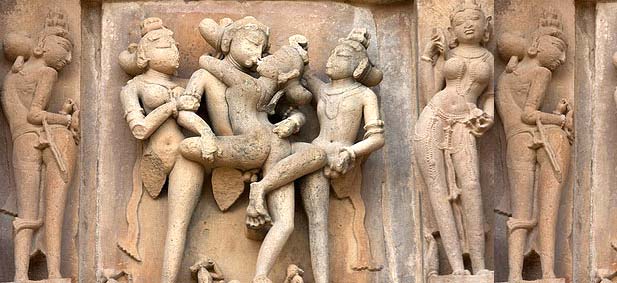
Hence, the idea of the free notion of Sexuality and Sexual Freedom was strictly curtailed only to the husband within wedlock. Moreover, severe restraints were placed on women to avoid capture, enslavement, and rape by the invaders. This was the period when the Sexual Orientation and expression transformed from a libertarian notion which gave birth to moral conscience and finally ‘Morality’. Morality, in its, strict sense of the term, itself is vague when trying to distinguish between proper and improper actions, decisions or intentions.
Precisely, Morality usurped the sexual freedom and maintained a rigid code of conduct for actions, behavior, and thoughts. This led to Women being treated as subordinate to men who were primarily thought to be caring, gentle, loving, obedient and timid towards the husband and his in-laws. Thus, Sexual and Societal inhibitions began to manifest itself in the rationale of Morality leading to an emergence of a new conflict between Sexuality and Morality.
It was widely understood that in ancient India that an authentic marital act of sexual intercourse, rendering the spouses “all flesh” would enhance their spiritual friendship with God. In a narrow perspective, sexual acts and sexual freedom had nothing to do with “pleasure” instead it was seen as an obligation and a responsibility towards procreating progeny for family honor and prestige. Thus, Morality, in a way, objectified Women to mere procreating machines rather than a complete, liberal and self-independent human being.
Further, strict sanctions were imposed on any erring Woman who deviated from the ideal path of Marriage and Womanhood. Any act which was against the “set” morals or standards of society was immediately frowned upon and the Woman was labeled as a ‘Prostitute’ or a ‘Woman available to all’. The ultimate result was not only the suppression of Sexuality but also the deep, inner feelings of expression which remained buried inside the heart of a Woman.
Reality can be never seen in Emotion. Same was the case when real ‘Moral Values’ of Culture and Society began to take shape, the unreal Sexual practices came to be viewed as immoral and polluted. The practice and views on Sexuality were later confined only to a four-walled room with the spouse, that too, in a legal wedlock. Thus, due to external aggression from invaders, the regression in our own attitude and culture took a retrograde step in the way Woman came to be treated by replacing True Sexuality with ‘Surreal Sexuality’.
With the arrival of the Western forces, Patriarchy which was in a nascent stage, in ancient India, began to dominate the scene from the latter half of the eighteenth century. Morality gained a new ascendancy and defines rules of moral conduct which was to civilize people was imposed by the colonizers. All this altogether cut the crucial connection between Sexuality and Morality which was loosely lingering around since many centuries and corrupted the idea of Sexuality by degrading it and uplifting Morality to a higher plane.
The irony was that though Sexuality was condemned, polygamy was still in practice, flesh trade flourished and concubine system wasn’t disallowed. The mode of an imposition of repressive Sexual sanctions was meant for higher caste women and royal households whose ‘virginity’ was safeguarded to protect family honor and prestige. The idea of “Pativrata Dharma” was popularized by the society and Western culture had little impact on the rigid notions of Indian Sexuality.
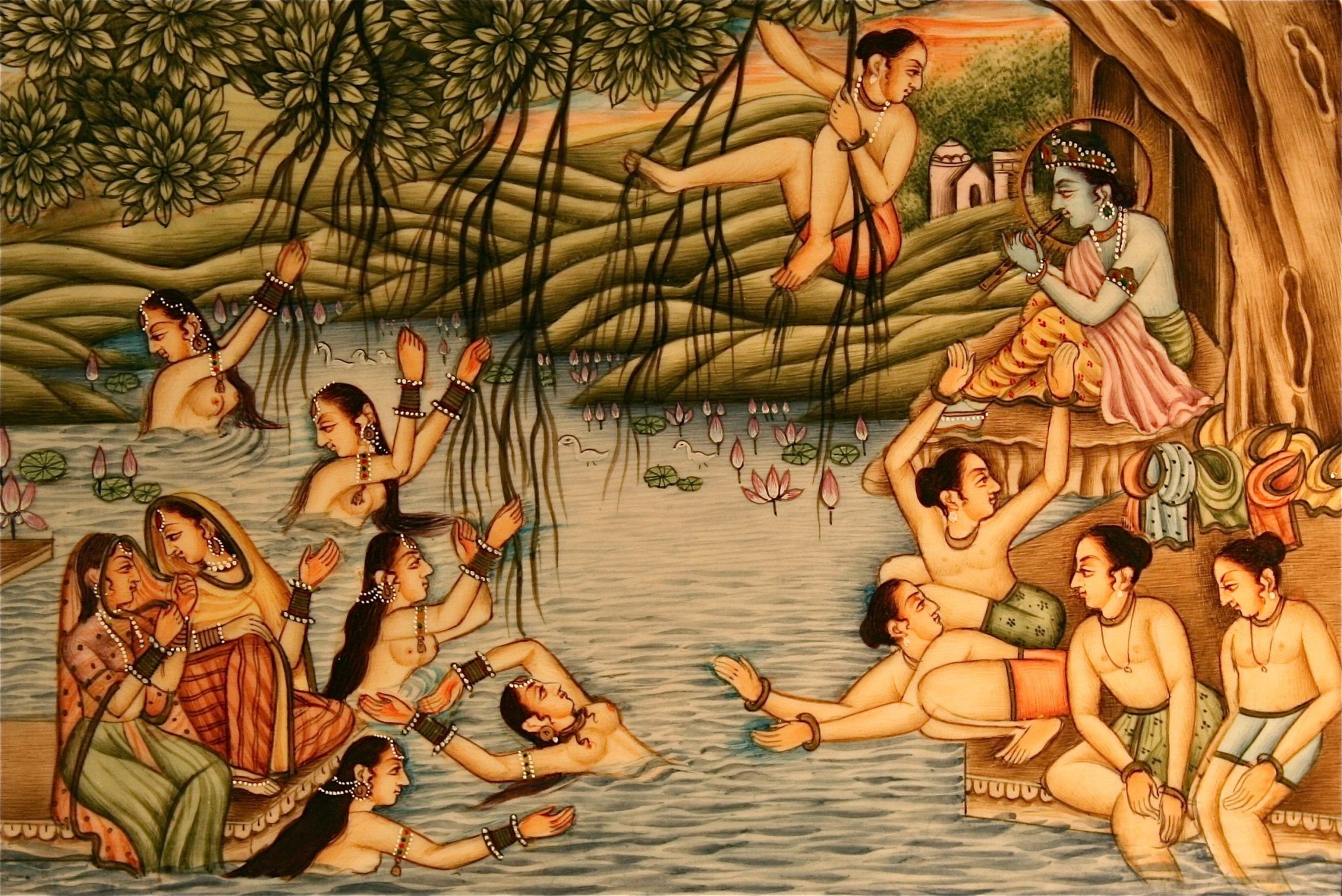
An extreme analogy would be if a Woman’s chastity was to be protected through repressive sexual sanctions, was a Woman’s dignity protected or her self-esteem safeguarded at all times? Many feminists argue that Woman was accorded a ‘low and sexually objectified status with no property rights, freedom of choice and independence’. Moreover, a traditional Indian Woman occupied the subject race of slaves caught in the tentacles of moral inhibitions for her life with no respectable status of her own depending on her husband and in-laws by serving them as masters till her death.
Society would view a Woman as pativrata who was pure, chaste, devoted and showed unwavering faith and loyalty to her husband. A Woman was not allowed to be her own judgment in deciding what was good or bad to her. A Woman’s word was never given heed for. Condemned by the society, disregarded by her husband and in-laws and disowned by moral inhibitions, the plight, and anguish of an ordinary Woman was terrible to which there’s no parallel. If a Woman really belonged to a Man, did a Man ever start believing that he belonged only to a particular Woman?
The Jurisprudence of Morality: Refuting Sexualization over Moralization?
Enforcement of Morality in simultaneous concurrence with Law hasn’t been a cakewalk. The ideas behind Morality have always been questioned and debated over the centuries due to its varying contradictions and applications in the reality of a virtual world. In simple terms, Law is an enactment made by the State which is backed by sanctions in case of its breach. These breaches are punishable through the Courts of Law which represent the will of the State. Also, the laws never exist in isolation as it is a reflection of the economic, political and social relationships in the society.
Even Law is not an overnight product instead it gradually evolved supplanting in it various sources such as Customs, Morals, etc. Law and Morality had always been intricately connected to each other invisibly. It is no exaggeration to say that most of the existing laws have always been based on the general moral principles of society for regulation of the conduct of an individual in a society. What constitutes ‘Moral’ is again a question of jurisprudential inquiry. Laws are considered to be effective when it collectively represents the conscience and moral will of the people.
The duty of a State is also to promote the general welfare of the people and moral perfection of man. At a time when Morality was ascending greater heights in society, the already diminishing ‘Sexualization’ culture took a backseat to the extent it categorically sowed the corrupt idea for future genes that Morality always prevails over Sexuality.
Morality can exert very great influence on Law as it distinguishes proper actions from improper actions and makes them illegal. Anything which is illegal attracts legal sanctions. Thus, Morality can codify and shape laws according to the prevailing customs, morals, practices, and traditions. Moreover, the scope of Morality is entirely different from Law in the aspect of governing a person’s intention and character. The entire skeletal sketch of Law is based on the public expression of morality which the society accepts.
So, Morality thrives on a reciprocal relationship of Imposition and Acceptance. But does that refute the fact everything is based on Morality? The conflict between Law and Morality always existed on the claims of powerful emotions and in the pursuit of self-interest to establish sound moral reasons. Again, it is very difficult to distinguish emotions from Morality to prove good conduct and intention. For instance, the recently emerging notion of ‘Homosexuality’ is morally wrong from the perspective of Morality. Why? It is because such a practice not only contradicts the natural aim of Sexuality but is considered a drastic deviation from the established existing norms and standards of society and is viewed as an improper action or behavior.
Similarly, the practice of Prostitution and Polygamy (excepting Islam) which was widely prevalent and recognized in the ancient world is frowned and shunned upon. Who sets these standards and Why should the society accept and categorize into Moral and Immoral? All these impending questions have unfortunately been argued with various cause-effect justifications and with no clear-cut reasons. A Society’s long culture, tradition, then prevailing customs and practices shape the ideology of good and bad. A rigid commonality cannot arrive at all times.
Some of these customs and practices may have become redundant over the years and some might be suppressed due to its very nature. What is acceptable in one culture or society may not be acceptable in the other. Most of these practices and traditions trace their source to Religion and its established tenets. Thus, the general common-sense, goodwill, conscience of good and bad gives life to a collective ideology as a society which in turn influences Moral Values.
Legal Enactments are framed with a view to prohibit certain conducts and promote excellence by elevating the moral standards of the people. Though, it isn’t disputed that laws definitely should comply with certain moral conformity, can a law always impose a particular Code of Conduct in conformity with Morality against the fast-changing and evolving world? Why isn’t there a room for accommodating more liberal and sophisticated ideologies? For instance, Rape, Prostitution, and Polygamy, according to the prevailing moral standards, are acts which are clearly sexual but these are not regarded to be sexual deviations unless some other additional factors are considered.
Argued from a rigid moralist perspective, promoting Sexualization Culture is considered to be the root cause of sexually deviant crimes and hence has to be vehemently curtailed by imposing rigid moral values. Now the obvious question is: Are Women still safe after being controlled and regulated by these highly civilized moral standards where no brutal sexual crimes have been inflicted on them? Why is the society unable to accept and digest the fact a rape victim cannot be treated as an ordinary and free dignified Woman before rape happened? Why are eyebrows raised when a Woman openly confesses her active sexual past? And why is Sexualization frowned upon at the same time on par with hidden Sexual Abuses?
Sexual Abuse is an issue which Morality cannot address due to the silent suffering of millions of Woman inside the four walls. Why does Morality wrong every action of a Woman in the century of Liberty, Fraternity and Independency with Freedom of Choice conferred after the age of Majority? Slut-shaming is another form of new Moral Policing. When a Woman is not treated well and is disrespected, why would people question her on the moral inhibitions of society? What was accepted in the past isn’t accepted and categorically rejected now.
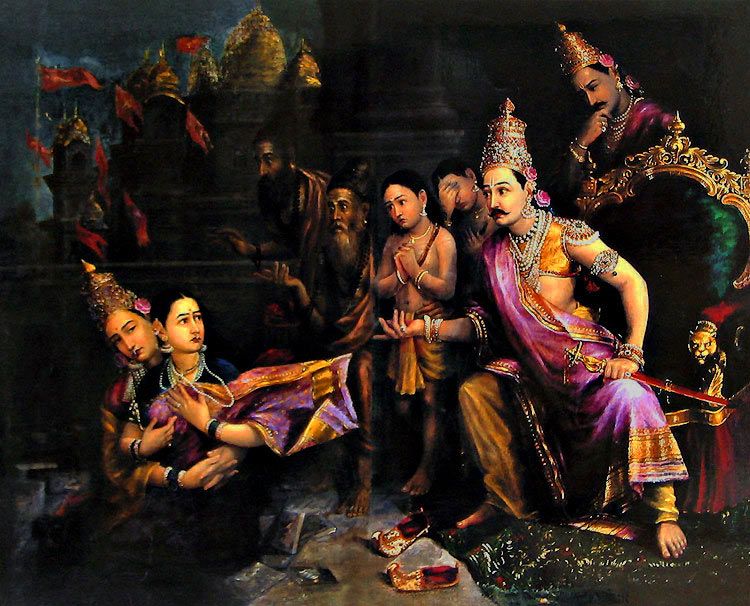
When Sati–Dharma was ‘Dharma’ at one point in time, why was it branded as Adharma later? When Sati–Dharma stipulates that the widow should follow the footpaths of her husband and self-immolate herself on her husband’s pyre along with him, why didn’t the same Sati–Dharma insist on the husband to follow the footpaths of his wife and self-immolate himself on the death of his wife? Why was a Man elevated to the status of marrying multiple numbers of Women whereas a Woman who had more than one husband was condemned? The Hindu Mythology speaks volumes on ‘Pativrata Dharma’ and on the concept of ‘Dharmpatni’.
Many people condemn Draupadi for having more than one husband but little did they know that every other Pandava brother had more than two wives apart from Draupadi. In the Ramayana, Why did Rama question Sita’s chastity after her return from Lanka? Still, Rama is being branded as Lord who doubted one of the most devoted and revered women like Sita. History itself justifies the undue position accorded to women as inferior to men. Apart from these, Woman was a subject of controversy under Hindu Law in all respects. Morality took a higher toll on every reasonable right which was to be accorded to them.
Be it Property Rights, Choosing her life-partner, Succession and Societal Status after becoming Widow, everything was looked down upon them. The first Law Giver of India Manu branded Women as “Seductress, Temptress and one who can even corrupt the Wise and the Educated”. He also elaborates by arguing that they need to be under the constant vigilance of her father during her youth, her husband after her marriage and her son during old age.
The sharp discrimination is clearly visible from our revered texts and rich academic literature which were trying to subjugate Woman in one form or the other. Can Morality still be argued as the best way to control a Woman’s Sexuality on the ground that it may pollute the wise and corrupt moral societal values?
The Changing Perceptions of Moral Sexual Culture: Combating the ‘Right’ Normativity?
Sexual Socialization is a multidimensional process with social norms, attitude, religion, moral values confronting it all levels. Challenging the established Normativity is not an easy task as it is considered to be an “improper action”. In the majority of the cases, the prediction of moral judgments happened through affective reactions. ‘Why Sexuality is considered a taboo’ remains to be still an unanswered question. Sexual Consent, Imbalance of Power in Relationships, Gender Identification, Sexual Orientation, etc. are some major sub-aspects under Sexuality.
In the modern age of globalization, the majority of feminists argue that a Woman has the ultimate right to control her Sexuality. But this is not per se acceptable by moral standards. Consensual Sexual Intercourse within marriage is allowed in all cultures and categorically there is no legal bar to it. Hence, it is evident that the Sexuality or Sexualization is controlled within the institution called ‘Marriage’.
Sexuality and Morality conflict at two points: 1) How far should Morality exercise control which is a natural biological feature of human beings? 2) Why Sexuality is controlled within a perfect created system of Marriage and is shunned upon outside legal wedlock? For instance, Pre-Marital Sex is not only considered an offense but also a great sin as no known religion in the world allows for it. A woman engaging in pre-marital sex are condemned and are being labeled as ‘Women of Easy Virtue’ or a Non-Virgin or a Whore.
Morality shouldn’t be static and has to keep adapting to the fast-changing circumstances of modernity for a progressive society. The irony is why the Indian society has always upheld the normative notions of Morality and fixing it as the standard for all the forthcoming centuries. Why can’t we witness a paradigm shift from outdated, stereotyped and traditional moral rules towards a more constructive, egalitarian, liberal and pragmatic approach? Can’t Morality and Sexuality go hand in hand is a blistering question yet to be answered?
Morality can never be possibly viewed in isolation as a plethora of factors intermittently influence its standards. For example; Caste Endogamy, Patriarchy, Dowry, etc. inherently affect the prevailing moral standards. A striking characteristic of Caste, Patriarchy, and Dowry is that it discriminates women’s sexuality by structuring gender relations and confining women to the private sphere on the basis of division of sexual labor. There is a common misperception among many rural Indian families that it is better to marry off their girl child at a young age to protect them from sexual assault and abuse from strangers.
Things appear to come to a standstill and these young new brides continue to face sexual abuse from her husband and in-laws by silently suffering within their four walls of hell. Any disclosures about their private life are seen to be immoral and are disciplined by elders to bear the grunt for sustaining in the conjugal society. This is largely attributed to the dependent and powerless position of women. More importantly, the Indian society right from ancient times revered Woman with a Godly status. More than husbandhood and fatherhood, selfhood, respectability, dignity and honor are tied more to Womanhood and Motherhood.
An unmarried woman or a woman without children was seen to be highly inauspicious and possibly dangerous in ancient India. Was this a new form of indirect discrimination to subjugate woman to occupy the subject race of slaves? The question largely remains unanswered. On the one hand, a Woman’s dignity, honor, and respect come with a tag of some additional features such as Chastity, Marriage, Progeny, Unwavering faith to her spouse, etc. Any form of deviance from this ideal set up is viewed as a ‘Woman, not of the highest Virtue’. The society itself bifurcated in the treatment meted out to rich and royal women on the one hand and to the poor and ordinary women on the other hand. In this context, do the moral standards against Sexuality for a rich and a poor woman differ or not?
Sexual Repression was never questioned by Women Groups and Feminists even till the early 1990’s. The assumptions underlying a Woman’s role in the family and society was brought into the limelight when many educated females started questioning the oppressive atmosphere and demanding equal rights outside the private sphere. The Western ideology of Liberty, Egalitarianism, and Freedom of Choice greatly inspired Women movements in India. The diverse stratified Indian society based on a firebrand combination of caste, class, community, and religion very often upheld the traditional old moral standards and rigidly enforced it within the family over Modernity.
The traditional Indian mindset had for long been irking over the fact that Western ideologies have been spoiling and destroying the glorious and ancient cultural foundations of Indian society. But the harsh reality is that how liberal and sophisticated are we in dealing with Women-centric issues? Why was it that Women were vehemently denied all their legal rights and forced to serve a superior gender of men by living as mere sexual objects for men’s pleasure? When did society start viewing a Woman’s body as a mere property of a Man by forsaking her within the restraints of marriage? Why was it made a norm that Morality as a norm which sets standards and determines right from wrong wasn’t to be questioned? The justifications to these complex webs of questions are still under inquiry in Feminist and Gender Studies.
The ‘Queer Theory’, which is a kind of post-structuralist critical theory proposed by Lauren Berlant in the early nineties rose as a response to the orthodox and traditional notions of moral standards. This theory heavily builds on the claims that gender is to be viewed as one with the essential self and the ‘queerness’ of the socially constructed natural sex acts and identities are to be identified. This theory also proposed a deconstruction model for harmonizing power imbalances in gender and followed a more liberalistic and open approach towards Sexual Identity without discarding the old orthodox school of moral values. 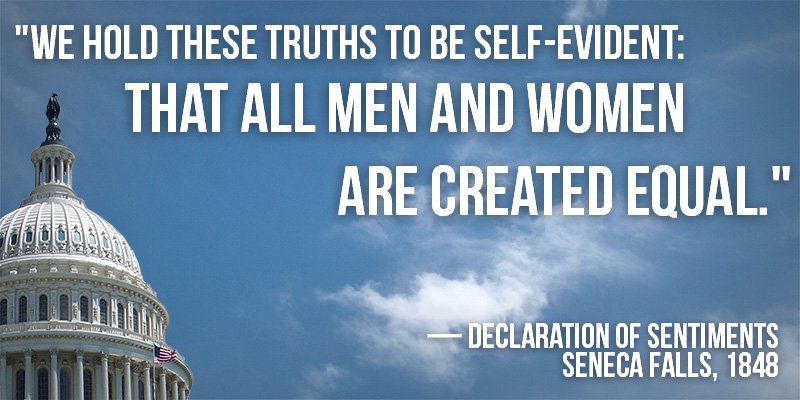
Though the glorious epoch for Women’s movement started with the signing of “Declaration of Sentiments” in 1848 for Women’s Rights, women are largely succumbing to death under mysterious circumstances even today. Hence, it is high time to enhance our narrow perception and adopt a more liberalist approach towards Sexuality and Morality rather than an orthodox, rigid, stereotype and outdated approach.
Conclusion & Suggestions
Women had been the prime subject of debate throughout history both among the religious scholars and the legal scholars. In a reductionist approach, when Women were deliberately denied their freedom and rights through the rigid imposition of patriarchal beliefs & practices, the idea of Feminism and Gender Equality developed not through some concatenation of events but through a long-standing history of con ‘brio women who had continuously revolted and consistently asserted their rights against the superior male breadwinners in all walks of life.
A Women’s status and dignity in both ancient and medieval society were always connected with the kind of functions and roles she was associated both with the private and public life. The idea of Sexuality and Morality had undergone many corruptions since ages. It is still evident that such a kind of conflict persists at the grass root level making it difficult to reduce this conflict.
Male Superiority Complex and Patriarchal Beliefs are the major reasons cited for restraining Moral Sexual Culture. Some suggestions which can help to curb the conflict of Sexuality and Morality at the grass root level are as follows:
- Creating awareness about Women Empowerment Campaigns in the public;
- Inculcating Gender-based Education in School Curriculum to develop a sense of Gender Equality among young adolescents;
- Mainstreaming gender perspectives in the development process and changing societal attitudes by strengthening legal systems by partnering with Women’s organizations;
- Improving and Upgrading sophisticated infrastructure for exclusively dealing with gender issues and sexual abuses against women;
- Educating the underprivileged Women by making them realize their rights to fight against oppressive male chauvinism.
Despite the existence of many Women Protection Laws such as the Protection of Women from Domestic Violence Act, 2005; Dowry Prohibition Act, 1961 and Sexual Harassment of Women at Workplace (Prevention, Prohibition & Redressal Act), 2013; Women are not free from the clutches of sexual harassments which are most prevalent in the form of Dowry, Sexual Abuse and Harassment at Workplace especially in India. Even Open Sexual Freedom is vehemently frowned upon as derogatory.
Though India ratified the ‘Convention on Elimination of All Forms of Discrimination against Women’ (CEDAW) in 1993, Women’s situation in India hasn’t satisfactorily improved at the ground level and many innocent Women still silently suffer ignominy behind the four walls. It is high time that the society recognizes the significance of Woman by marching towards a more egalitarian, progressive and libertarian culture of Moral Sexual Harmony.
– Lokesh Kumar Mavilla
Content Writer @ Legal Bites


